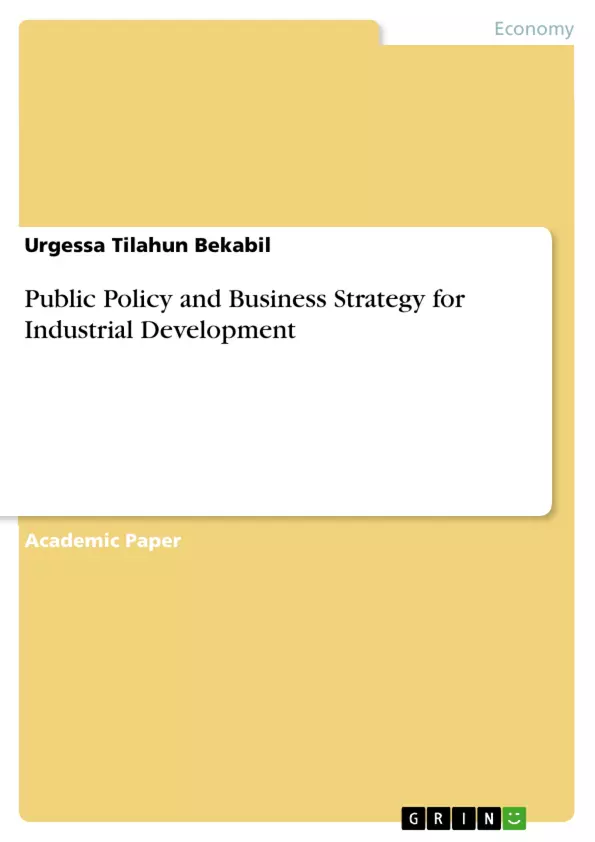Industrial policies are one of the instruments for addressing market failures. This paper is aimed at assessing what public policy and business strategy for industrial development in developing countries looks like from empirical studies perspective. In developing and emerging economies, small scale industrial enterprises that require protection from the side of the government are major source of employment. The small-scale industrial firms particularly need access to credit to increase their competitiveness and integrate themselves into local and global value chains. Policies and strategies that play a role in transforming the dominant and low productive sector, subsistent agriculture, to highly productive industrial sector is the focus area of governments of developing economies. Strategic coordination between private and public need to be functional to have policies and strategies that are important for sustainable industrial development in developing economies.
Inhaltsverzeichnis (Table of Contents)
- Abstract
- Introduction
- Statement of the Problem
- The objective of the term paper
- Literature Review
- Theoretical Perspective of Public Policy and Business Strategy for Industrial Development
- Empirical Perspective of Industrial Policy and Business Strategy for Industrial Development
- Public Policy for Industrial Development in LDCs
- Business Strategy for Industrial Development in LDCs
- Public Policy and Business Strategy Towards Industrial Development in Ethiopia
- Methodology
- Conclusion and Policy Recommendations
- Reference
Zielsetzung und Themenschwerpunkte (Objectives and Key Themes)
This paper aims to analyze the role of public policy and business strategy in driving industrial development in developing countries. It examines the empirical evidence from different perspectives, focusing on the context of countries with abundant labor resources and low productivity. The paper specifically explores the challenges faced by these nations in promoting industrialization, particularly the need for capital investment and the importance of integrating small-scale enterprises into global value chains.
- The role of public policy and business strategy in promoting industrial development
- The challenges of industrial development in developing economies with abundant labor but limited capital
- The importance of integrating small-scale enterprises into local and global value chains
- The need for strategic coordination between public and private sectors for sustainable industrial development
- The significance of fostering technological innovation and research and development in emerging economies
Zusammenfassung der Kapitel (Chapter Summaries)
- Introduction: The chapter sets the stage by outlining the importance of industrial development in driving economic growth and addressing contemporary challenges in developing countries. It emphasizes the need for targeted industrial policies to create jobs, reduce poverty, promote technological advancements, and foster sustainable economic development.
- Statement of the Problem: This chapter delves into the challenges faced by developing countries in achieving sustainable industrial development. It highlights the significance of productivity growth, particularly in the context of limited research and development investments in emerging economies. The chapter emphasizes the need for policies that promote both economic growth and inclusive participation of the disadvantaged populations.
- Literature Review: This section provides a comprehensive overview of the existing literature on public policy and business strategy for industrial development. It examines both theoretical perspectives and empirical evidence, focusing on the experiences of LDCs. The chapter explores the challenges faced by developing countries in implementing effective industrial policies and the importance of strategic coordination between public and private sectors.
Schlüsselwörter (Keywords)
The key terms and concepts explored in this work include industrial development, public policy, business strategy, developing economies, market failures, small-scale enterprises, global value chains, productivity growth, research and development, technological innovation, inclusive growth, and strategic coordination.
- Quote paper
- Urgessa Tilahun Bekabil (Author), 2021, Public Policy and Business Strategy for Industrial Development, Munich, GRIN Verlag, https://www.grin.com/document/1040702



